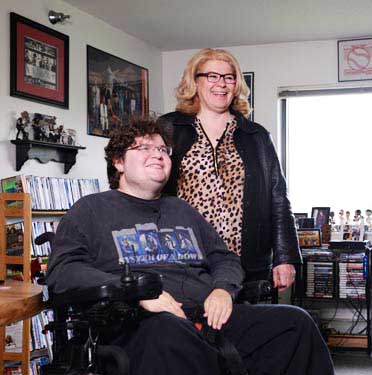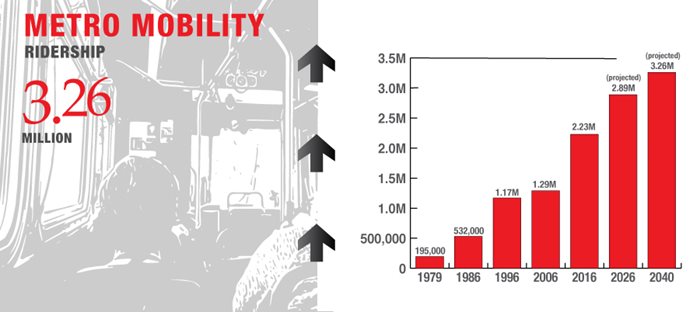
Chris Buhl used to drive himself wherever he needed to go, until the effects of muscular dystrophy ended his ability to drive. Muscular dystrophy, a disease that affects muscles and causes them to lose strength, can make everyday tasks a challenge.
But the Brooklyn Park resident isn’t looking for sympathy. What he wants is a ride, when he needs it and where he needs it: to a doctor appointment, the grocery store, or a Twins game with his aunt, Marilyn Parker, who lives in Saint Paul.
 For Chris, Metro Mobility means independence. For aunt Marilyn, it’s also about the health and well-being of her beloved nephew. Marilyn says the service is imperative to families like hers, and calls Metro Mobility a “life saver.”
For Chris, Metro Mobility means independence. For aunt Marilyn, it’s also about the health and well-being of her beloved nephew. Marilyn says the service is imperative to families like hers, and calls Metro Mobility a “life saver.”
“If you cut Metro Mobility, there will be more mental health problems due to isolation. People won’t be able to get to their doctor appointments, so there’s going to be more physical problems,” she said.
Chris says, “I want to stay as active as I can, of course; for as long as I can have the independence and the ability to make things better for myself with the help of Metro Mobility, it’s a real big thing.”
The Council operates Metro Mobility through contracts with two private transit providers.
Metro Mobility at a glance
-
Shared public transportation service for certified riders who are unable to use regular fixed-route buses due to a disability or health condition
-
Operates 365 days a year
-
Provided 2.2 million rides in 2016
-
Rides provided for any purpose
-
Service area includes Minneapolis, Saint Paul, and nearly 90 adjoining suburbs
Demand for Metro Mobility service in the Twin Cities metro area has increased 5% to 8% annually in recent years. The trend is expected to continue well into the future, given overall population growth and the aging of the “baby boom” generation.
More information
Visit www.metromobility.org to learn how to become certified for Metro Mobility service.
Did you know?
Many Metro Mobility riders are on their way to work, school or other essential activities. It’s just another way public transit contributes to the economic vitality of the region.
Then & Now

Metro Mobility ridership numbers: 1979 - 195,000; 1986 - 532,000; 1996 - 1.17 million; 2006 - 1.29 million; 2016 - 2.23 million; 2026 - 2.89 million (projected); 2040 - 3.26 million (projected)